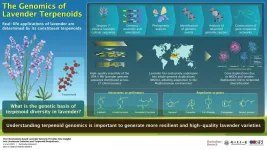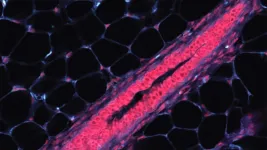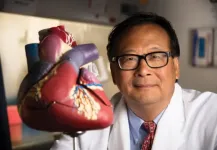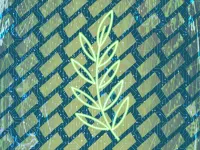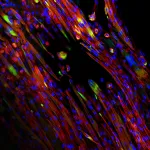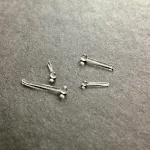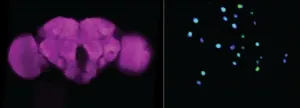Etching process enhances the extraction of hydrogen during water electrolysis
2021-05-14
(Press-News.org) Extracting hydrogen from water through electrolysis offers a promising route for increasing the production of hydrogen, a clean and environmentally friendly fuel. But one major challenge of water electrolysis is the sluggish reaction of oxygen at the anode, known as the oxygen evolution reaction (OER).
A collaboration between researchers at Hunan University and Shenzhen University in China, has led to a discovery that promises to improve the OER process. In their recent paper, published in the KeAi journal Green Energy & Environment, they report that etching - or, in other words, chemically removing - the oxide overlayers that form on the surface of the metal phosphide electrocatalysts regularly used in electrolysis, can increase OER efficiency.
Professor Shuangyin Wang of the State Key Laboratory of Chem/Bio-sensing and Chemometrics at Hunan University led the study. He explains: "While metal phosphides are often used as catalysts due to their unique physicochemical properties such as high conductivity, earth-abundance reserves and excellent performance, a common, but often neglected fact is that they are quick to suffer atmospheric oxidation when they are exposed to air. This causes them to form oxide overlayers on their surface, which can change the surface reconstruction process and confuse the structure-performance relationship."
To solve this problem, Professor Wang and his colleagues decided to etch away those oxide overlayers using a dielectric barrier discharge plasma technique. And they discovered that the etching process not only accelerated the surface reconstruction process, but greatly enhanced the formation of metal hydroxides and OER activity.
According to Prof. Wang: "These findings are helpful for understanding the structure-performance relationship of metal phosphides in electrooxidation reaction. And we suspect that the same etching process has the potential to be used on other oxygen-susceptible metal compounds such as chalcogenides, nitrides and carbides.
"Our hope is that our study guides the rational design and engineering of more efficient electrocatalysts for water electrolysis."
INFORMATION:
Contact the paper's lead author: Shuangyin Wang, shuangyinwang@hnu.edu.cn
The publisher KeAi was established by Elsevier and China Science Publishing & Media Ltd to unfold quality research globally. In 2013, our focus shifted to open access publishing. We now proudly publish more than 100 world-class, open access, English language journals, spanning all scientific disciplines. Many of these are titles we publish in partnership with prestigious societies and academic institutions, such as the National Natural Science Foundation of China (NSFC).
[Attachments] See images for this press release:
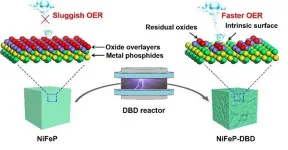
ELSE PRESS RELEASES FROM THIS DATE:
2021-05-14
Even the mention of lavender evokes the distinct fragrance of the flower. This beautiful flower has been used to make perfumes and essential oils since time immemorial. The aesthetics of the flower have captured the imagination of hundreds, worldwide. So, what makes this flower so special? What are the "magical" compounds that gives it its unique fragrance? What is the genetic basis of these compounds? These questions have long puzzled scientists.
To find out the answers, a group of scientists from China have sequenced the genome of lavender, which is known in the scientific world as Lavandula angustifolia. The team headed by Dr. Lei Shi, Professor at the Key Laboratory of Plant Resources and Beijing Botanical Garden, Institute of Botany, Chinese ...
2021-05-14
What if you could predict which cells might become cancerous? Breast tissue changes dramatically throughout a woman's life, so finding markers for sudden changes that can lead to cancer is especially difficult. Cold Spring Harbor Laboratory (CSHL) Associate Professor Camila dos Santos and her team identified and cataloged thousands of normal human and mouse breast cell types. The new catalog redefines healthy breast tissue so that when something goes awry, scientists can pinpoint its origin.
Any breast cell could become cancerous. Dos Santos says:
"To understand breast cancer risk, you have to understand normal breast cells first, so when we think about preventive and even targeting therapies, ...
2021-05-14
BIRMINGHAM, Ala. - In a large-animal study, researchers have shown that heart attack recovery is aided by injection of heart muscle cells derived from human induced pluripotent stem cell line, or hiPSCs, that overexpress cyclin D2. This research, published in the journal Circulation, used a pig model of heart attacks, which more closely resembles the human heart in size and physiology, and thus has higher clinical relevance to human disease, compared to studies in mice.
An enduring challenge for bioengineering researchers is the failure of the heart to regenerate muscle tissue after a heart attack has killed part of its muscle wall. That dead tissue can strain the surrounding muscle, leading to a lethal heart enlargement.
Heart experts thus have sought to create new tissue -- applying ...
2021-05-14
Inspired by nature, researchers at Pacific Northwest National Laboratory (PNNL), along with collaborators from Washington State University, created a novel material capable of capturing light energy. This material provides a highly efficient artificial light-harvesting system with potential applications in photovoltaics and bioimaging.
The research provides a foundation for overcoming the difficult challenges involved in the creation of hierarchical functional organic-inorganic hybrid materials. Nature provides beautiful examples of hierarchically structured hybrid materials such as bones and teeth. These materials typically showcase a precise atomic ...
2021-05-14
HOUSTON - (May 14, 2021) - Rice University bioengineers are fabricating and testing tunable electrospun scaffolds completely derived from decellularized skeletal muscle to promote the regeneration of injured skeletal muscle.
Their paper in Science Advances shows how natural extracellular matrix can be made to mimic native skeletal muscle and direct the alignment, growth and differentiation of myotubes, one of the building blocks of skeletal muscle. The bioactive scaffolds are made in the lab via electrospinning, a high-throughput process that can produce single micron-scale fibers.
The research could ease the burden of performing an estimated ...
2021-05-14
Scientists have used fibre-optic sensing to obtain the most detailed measurements of ice properties ever taken on the Greenland Ice Sheet. Their findings will be used to make more accurate models of the future movement of the world's second-largest ice sheet, as the effects of climate change continue to accelerate.
The research team, led by the University of Cambridge, used a new technique in which laser pulses are transmitted in a fibre-optic cable to obtain highly detailed temperature measurements from the surface of the ice sheet all the way to the base, more than 1000 metres below.
In contrast to previous studies, which measured temperature from separate sensors located tens or even hundreds of metres apart, the new approach allows temperature ...
2021-05-14
A microscope used by Antoni van Leeuwenhoek to conduct pioneering research contains a surprisingly ordinary lens, as new research by Rijksmuseum Boerhaave Leiden and TU Delft shows. It is a remarkable finding, because Van Leeuwenhoek (1632-1723) led other scientists to believe that his instruments were exceptional. Consequently, there has been speculation about his method for making lenses for more than three centuries. The results of this study were published in Science Advances on May 14.
Previous research carried out in 2018 already indicated that some of Van Leeuwenhoek's microscopes contained common ground lenses. Researchers have now examined ...
2021-05-14
In research made possible when COVID-19 sidelined other research projects, scientists at Johns Hopkins Medicine meticulously counted brain cells in fruit flies and three species of mosquitos, revealing a number that would surprise many people outside the science world.
The insects' tiny brains, on average, have about 200,000 neurons and other cells, they say. By comparison, a human brain has 86 billion neurons, and a rodent brain contains about 12 billion. The figure probably represents a "floor" for the number needed to perform the bugs' complex behaviors.
"Even though these brains are simple [in contrast to mammalian brains], they can do a lot of processing, even more than a supercomputer," says Christopher Potter, Ph.D., associate professor of neuroscience ...
2021-05-14
Being treated fairly is important - but fairness alone isn't enough to make people feel valued in a workplace or other groups, new research suggests.
Researchers found that "distinctive treatment" - where a person's talents and qualities are recognised - provides this sense of value while also reinforcing their sense of inclusion. It also promotes mental health.
The findings suggest there is no conflict between "fitting in" and "standing out" in groups - in fact, they complement each other.
But while the importance of fairness is widely accepted, the researchers say distinctive treatment is ...
2021-05-14
AMES, Iowa - The field photos show the hard, rough country that some glaciers slide over: rocky domes and bumps in granite, rocky steps and depressions in limestone. The glacier beds dwarf the researchers and their instruments. (As do the high mountains pictured on the various horizons.)
During their trips to glacier beds recently exposed by retreating glaciers in the Swiss Alps (Rhone, Schwarzburg and Tsanfleuron glaciers) and the Canadian Rockies (Castleguard Glacier), four glaciologists used laser and drone technology to precisely measure the rocky beds and record their very different contours.
The researchers turned the measurements into high-resolution digital models of those glacier beds. Then they went to work with manageable but representative subunits of the ...
LAST 30 PRESS RELEASES:
[Press-News.org] Etching process enhances the extraction of hydrogen during water electrolysis

